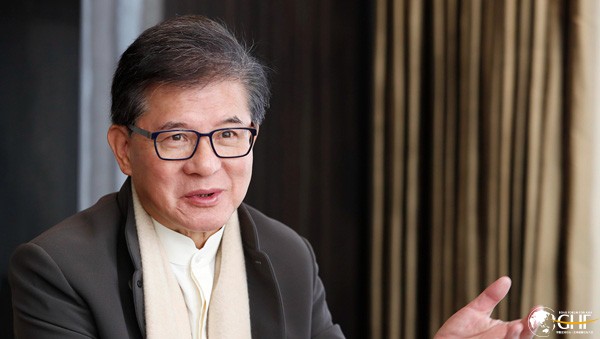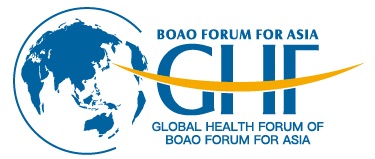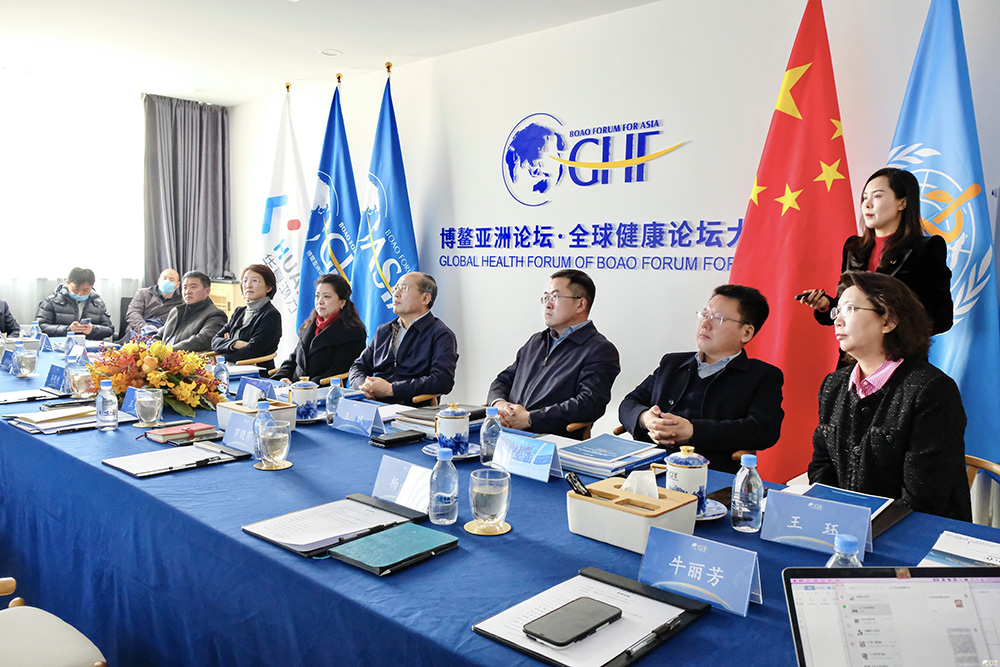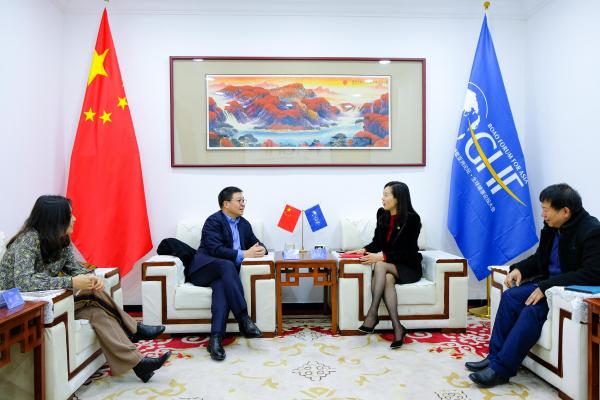
Vincent H. S. Lo
Director of Boao Forum for Asia, Chairman of Shui On Group
“As reform and opening up continue, China will still be an engine of demand and growth in the post-COVID era with the ever-expanding middle class and big consumer market. China shall take the lead to combat deglobalization for greater economic cooperation to maintain a favorable global trade and investment environment.”

COVID-19 has taken a heavy toll on the global economy, and both developed economies and emerging economies experience the economic downturn. Despite the introduction of government bailout programs and massive quantitative easing, the world-wide recession severer than the 2008 global financial crisis still kicks in. According to the International Monetary Fund (IMF), as of middle of this year, the ongoing COVID-19 has already prompted an unprecedented fiscal policy response of $11 trillion, accounting for about 12.5 percent of global GDP. It’s comforting to see the positive role of funds in easing the pressure of unemployment and weak consumption, but they have also led to global imbalances such as increased government debt, rising asset bubbles and a widening income gap.
"Countries around the world should work together against de-globalization as it cripples cross-border trade and hinders global recovery. We need to adopt concerted policies to mitigate global economic imbalances and revitalize the multilateral trading system. China, as the first country to emerge from the crisis, is the only major market to bounce back with positive growth."”
Countries around the world implement lockdowns and social distancing to grapple with the pandemic, and these responses translate into production suspension and surge in unemployment. Service and tourism industries have been hit hard with notable bankruptcies and job losses. World Travel and Tourism Council (WTTC) estimated the number of international visitors to fall by 53 percent this year, and 121 million travel and tourism-supported jobs could be lost this year due to travel restrictions. Government statistics show that the U.S. unemployment rate, which soared to 14.7 percent in April, eased in August at 8.4 percent. The Eurozone unemployment rate also reached 7.9 percent in July. East Asian countries that responded quickly are more resilient than South Asia, where the pandemic grips the region. According to the World Bank, South Asian economies will contract by 2.7 percent in 2020, a figure more than twice that of East Asia.
China is unparalleled in response and bringing the pandemic under control. The World Bank forecasted that global GDP will contract by 5.2% this year, with developed economies falling by 7.0%. China will be the only G20 country to register positive economic growth by 2020, and many emerging economies incapable of dealing with the crisis will take a huge blow.
Before the outbreak of COVID-19, populism and protectionism had already reared their ugly heads due to the festering wealth gap. Deglobalization looms large with typical events such as Brexit, the U.S. withdrawal from the Trans-Pacific Partnership (TPP), and the intensified trade tensions between China and the U.S. The trend of nationalism and deglobalization is also particularly true in international trade statistics, with merchandise trade accounting for 51.4% of global GDP in 2008, but the number fell to 44.0% in 2019. The World Trade Organization (WTO) said the pandemic has been hurting international trade flows and forecasted that global trade in goods would fall by 13% this year.
Xenophobia, bred by nationalism and populism, will threaten social stability and regional peace. The world populism index tracked by Bridgewater Associates was at its highest level in 2007 since World War II. The complex and volatile political landscape is a recipe for social unrest. The outbreak of COVID-19 make the things go from bad to worse: a weak economic recovery will lead to international tensions and increase geopolitical risks. Recent disputes between China and the U.S. over technology and cybersecurity issues have dimmed the vision of world's two largest economies to work together to drive a global recovery. Worsening U.S.-China relations is bound to postpone the economic recovery while drag out the recession.
Countries around the world should work together against de-globalization as it cripples cross-border trade and hinders global recovery. We need to adopt concerted policies to mitigate global economic imbalances and revitalize the multilateral trading system. China, as the first country to emerge from the crisis, is the only major market to bounce back with positive growth. As reform and opening up continue, China will still be an engine of demand and growth in the post-COVID era with the ever-expanding middle class and big consumer market. China shall take the lead to combat deglobalization for greater economic cooperation to maintain a favorable global trade and investment environment.
"The pandemic-induced downturn has created an urgent need for new investment in countries along the Belt and Road who look to emerge from the recession. They are leveraging the weak dollar and low interest rate to expand investment in infrastructure."
Over the past year, the confrontation between the U.S. and China has extended from trade, finance and technology to the military. The Trump administration's recent Cold War rhetoric has intensified tensions and further complicated relations between the two countries. Unfortunately, the situation is likely to prevail after the U.S. presidential election in November. The world is currently in an extremely volatile and sensitive period, with geopolitical tensions and a raging coronavirus. We need an ambitious vision and plan to get the world back on track, and we need visionary leaders to create a better future for humanity. The Belt and Road Initiative is one of such ambitious plans!
Since the Belt and Road Initiative was launched in 2013, the number of member countries/regions has reached 138, with more than 200 investment agreements and contracts signed as of January this year. The pandemic-induced downturn has created an urgent need for new investment in countries along the Belt and Road who look to emerge from the recession. They are leveraging the weak dollar and low interest rate to expand investment in infrastructure. Thanks to the support of 103-member Asian Infrastructure Investment Bank (AIIB), China can provide expertise and financing for infrastructure projects in Belt and Road countries and enable Chinese and international companies to engage in economically sound and viable infrastructure projects to bring all participating countries closer. These projects will not only help the host countries expand employment and increase income, but also put capital to effective use by capitalizing on the excess liquidity released by central bank quantitative easing. In due course, investment projects in infrastructure, healthcare, and 5G could be extended to other Belt and Road countries in Eastern Europe and Africa.
“As the world is emerging from the pandemic, China will have an opportunity to advocate solidarity and share vaccines and therapeutic drugs with other countries, especially those along the Silk Road Economic Belt and the 21st Century Maritime Silk Road. This will help consolidate China's economic and trade ties with the Belt and Road member countries.”
In the post-COVID era, the global economy will undergo profound adjustments and the external environment will remain volatile. "Dual Circulation" development strategy to be implemented in China makes it more resilient to external shocks. While this means that China will rely more on the domestic market as the major driver of growth, the growth of domestic market will also generate greater demand for imports and create market opportunities to attract external investment. In this way, the external circulation also benefits. Higher quality growth in China depends on its greater efforts in expanding its domestic market. Greater regional connectivity will also more capital and technology inflows possible, and boost trade growth in countries along the Belt and Road. As a result, some labor-intensive industries will be shifted to low-cost countries, allowing Chinese companies to navigate the transition to strategically emerging industries and move up the value chain.
As the world is emerging from the pandemic, China will have an opportunity to advocate solidarity and share vaccines and therapeutic drugs with other countries, especially those along the Silk Road Economic Belt and the 21st Century Maritime Silk Road. This will help consolidate China's economic and trade ties with the Belt and Road member countries. Asia is the pillar of the world's economic growth and prosperity, and China's contribution to the post-pandemic recovery will benefit the world and help maintain peace and stability in the Asian region. Geographically close to ASEAN, Hainan Province was positioned by central government to be built into a Free Trade Port on the occasion of 20th anniversary of the Boao Forum for Asia, which will make it a gateway for closer cooperation between China and ASEAN countries.



 Viewpoints
Viewpoints
 Partner application
Partner application Download
Download Hot News
Hot News









